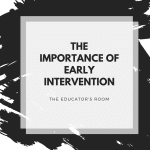[fusion_builder_container hundred_percent=”yes” overflow=”visible”][fusion_builder_row][fusion_builder_column type=”1_1″ background_position=”left top” background_color=”” border_size=”” border_color=”” border_style=”solid” spacing=”yes” background_image=”” background_repeat=”no-repeat” padding=”” margin_top=”0px” margin_bottom=”0px” class=”” id=”” animation_type=”” animation_speed=”0.3″ animation_direction=”left” hide_on_mobile=”no” center_content=”no” min_height=”none”]
Recently California Governor Jerry Brown signed in to law AB 420, which limits suspensions and expulsions due to willful defiance in K-12. Last week I had the opportunity to sit down with the bill’s author, State Assembly member Roger Dickinson, at the state capitol in Sacramento.
See why students should not be suspended nor expelled for “willful defiance,” what should be done to reform teacher credentialing requirements, how the enforcement of this new law connects to the Local Control Funding Formula (LCFF), and what educational issues the legislature seeks to address next:
Dooley: I notice that you have a history of being on the Board of Supervisors and serving on other committees that are not specifically education-based, so why do you have a focus on education in AB 420?
Dickinson: Well, when I was a County Supervisor, I was very involved in issues related to health and welfare of children generally. In 2007, I became particularly interested in issues of youth and gang violence… I created a coalition called Yes to Youth, a very broad spectrum of organizations and entities within Sacramento County, including schools, local business leaders, law enforcement, community leaders, youth advocates.
…When I came to the Legislature at the start of 2011, I asked the Speaker to create a Select Committee on delinquency prevention and youth development and allow me to chair that committee. The Speaker did that, and we held a hearing addressing school discipline. That occurred in Dec. 2011, and really introduced the issue of school discipline to me in a way I hadn’t thought about it before. I became involved in the issue, and that lead to what was AB 2242, which in 2012 made its way to the Governor but was ultimately vetoed – and then subsequently AB 420, which the Governor just signed this past Saturday (Sept. 27).
I didn’t realize AB 420 was a new incarnation of a previously vetoed legislation. How is this new bill different from the original version?
AB 420 evolved in to its final form from negotiations with the Governor’s staff. It was narrowed considerably from where I started. It prohibits the use of willful defiance for out-of-school suspension for grades K-3, and prohibits the use of willful defiance for basis of expulsion for grades 4-12. It also has a 3.5-year sunset on it, meaning that if it is not reenacted within three and a half years, it would cease to exist as a law… So we have a “test period,” so to speak.
And that “test period” was not part of the original bill (AB 2242)?
No; there was no sunset in the original bill. The original bill, and 420 initially, applied to not using willful defiance for grades K-6 for suspension, and not allowing for expulsion in grades 7-12… We cut it back to K-3, which is what the Governor was willing to do.
I give the Governor a lot of credit, because when he vetoed my bill in 2012, he said in his veto message this is an issue that just should be left to local administrators and teachers; the state should not become involved. So we’ve worked over the past two years to try to present evidence to him that this actually is an issue that requires state involvement… I give him credit for being willing to re-evaluate the issue – and he hasn’t gotten to the same place I am, but he’s certainly moved in his thinking, and that’s a credit to him.
This connects to a question of whether this should be a school/district kind of responsibility, as opposed to a state-legislated responsibility. What is the logic to support this being a state-legislated issue?
Well, the state specifies in the state Education Code the reasons for suspension or expulsion, so the state is already involved deeply in this issue of school discipline by providing the Education Code. I don’t think that it’s actually an extension or new involvement to say that the state is now indicating that one of those reasons for suspension or expulsion can only be used in certain times or places. It’s the start of a needed course-correction in state policy.
We’ve been talking about willful defiance here, so can we operationalize that variable a little bit more? What would constitute an example of willful defiance?
The thing about willful defiance is it’s literally undefined in the Education Code, so it can be anything that a teacher or administrator determines it to be. That’s one of the problems. For some, willful defiance would be very serious behavior. It would be maybe threatening a teacher in some way, for example, or another student. For others, we have instances where it’s been talking back to the teacher, or not doing homework, or wearing a hat in class that the teacher didn’t like.
There was a story widely reported in the news a few years ago that took place in Colorado, where a boy who was roughly six years-old was standing in line for lunch next to a little girl the same age and began singing a song to her where some of the lyrics were, “I’m sexy and I know it.” That little boy—no one believes he had any idea what he was singing about substantively—was suspended out of school for sexual harassment, for willful defiance of school rules. You know, that just doesn’t make any sense. I mean, why would you ever suspend a six year-old out of school? Why wouldn’t you say, ‘here, we need to talk about this, and have you understand why that is not acceptable, and that is something you should not do’?
So, especially when it comes to our youngest students—5, 6, 7, 8 years old—the idea that we would kick them out of school is one that is counterproductive to reinforcing in the child that being in school is a good thing, and they should want to be there in order to learn.
Well, why is suspension or expulsion such a big problem? I mean, if a student is doing something that is disruptive to the learning environment, shouldn’t they be removed for the benefit of the other students in the room?
There are going to be instances, to be sure, when a student is disruptive to the extent that they cannot stay in the classroom. My legislation does not require that the student remain in the classroom no matter what the behavior is… The real issue is whether you remove a student from the school all together – or whether you as a school and school administration try to take steps to address the behavior and try to correct it so that the student actually stays in school and modifies the behavior in a way that is acceptable and not disruptive.
In most cases, behavior is going to be symptomatic, not causal. What I mean by that is, there’s something else going on in the child’s life that triggers the behavior. Until an adult comes along and says, ‘so what’s going on in your life? Let’s find out what’s happening,’ – until that happens, you’re not going to change the behavior just by saying, ‘leave school.’ You’re only going to move the problem from one venue to another.
I think this is well illustrated by a story the principal from one of the [/fusion_builder_column][fusion_builder_column type=”1_1″ background_position=”left top” background_color=”” border_size=”” border_color=”” border_style=”solid” spacing=”yes” background_image=”” background_repeat=”no-repeat” padding=”” margin_top=”0px” margin_bottom=”0px” class=”” id=”” animation_type=”” animation_speed=”0.3″ animation_direction=”left” hide_on_mobile=”no” center_content=”no” min_height=”none”][local] high schools told when she was testifying on the bill in one of the committee hearings. She said she was on cafeteria duty one day. A girl walked by her with her lunch tray, and she told the girl to bus her tray. Instead, the girl took her tray, turned it upside down, and threw it at [at principal’s] feet. The principal said, that was clearly willful defiance; no one would have contested that conclusion. She said that her first instinct was to suspend the girl out of school. But instead of doing that, she said, ‘hey, let’s go to my office and sit down and talk a bit.’ And when that happened, the principal found out that the girl’s mother had left the family that week, and that there were a number of other personal issues that girl was struggling with. That was what was behind the behavior. It wasn’t that she didn’t like the principal, or didn’t like school, or anything else – it was that she was feeling anger, frustration, sadness; all those feelings you feel when you have traumatic events in your life. Instead of suspending the girl out of school, the principal talked with her, she had some counseling, and she became one of the best students in her class.
I think that’s the point: kicking kids out of school doesn’t solve a problem. It only moves the problem to another venue. And we’re all better off if we can address the real issues that are causing the behavior. Certainly the child is better off… Our neighborhoods are safer if kids are in school and not out on the street. And it saves taxpayer money if we’re teaching kids and they’re learning what they need to know to go on in life and become productive, versus going out on the street and becoming involved in the criminal justice system. So we can do well by the student, do well by the safety in our communities, and do well by the taxpayers by keeping our kids in school.
Connected to this is doing a better job equipping teachers with the tools of conflict management and resolution… I also approached the Teacher Credentialing Commission and asked about if they’d beef up the credentialing curriculum to incorporate elements related to classroom management and conflict resolution, which they are in the midst of doing.
We can’t expect teachers to know how to minimize conflict if we don’t give them any training or tools to do that. I talked with some faculty and asked them what’s in the curriculum today to help teachers know what techniques work to try to bring down the tension level, and they said, ‘you know, we just throw them out there and let them start student-teaching, and let them figure it out.’ Is that what we do? We don’t do that with airplane mechanics and say, ‘you know, get out there and fix that engine, and we’ll see how it works.’ It’s crazy to me that we would do that. I’ve talked with a lot of teachers, and there’s a lot of apprehension. But the apprehension I run in to more often than not has its basis in their lack of confidence in knowing how to diffuse conflict and how to manage their classroom, so they default in a sense to saying, ‘you gotta leave the classroom.’ It’s not the teacher’s fault; it’s our fault for not giving teachers the training and the tools to help manage the classroom. So hopefully that’s going to change, too.
I also think we have big issues that we still need to address in terms of cultural competence. I think you see this reflected in disproportionality of discipline that’s imposed. For example, if you’re an African-American boy, you’re three-and-a-half to four more times likely to be suspended out of school than if you’re an Anglo boy. If you’re disabled, you’re twice as likely to be suspended out of school. If you identify as LGBT, you’re twice as likely to get suspended out of school. There’s no inherent reason that I can imagine for why, if you’re disabled, you should be twice as likely to be suspended out of school. I think a good part of this has to do with cultural competence and understanding. We need to do a better job helping our teachers in that regard as well.
Yes, because different people communicate through different norms and mechanisms, as we need to understand that.
So seeing as the bill is now signed in to law, let’s talk in terms of implementation and enforcement. How might this connect with the Local Control Funding Formula (LCFF)?
As part of the LCFF, each district is required to have a Local Control Accountability Plan (LCAP). A component of the LCAP is what the district is doing with respect to discipline. So I do think that there’s a direct connection, as the LCAP is the accountability tool for implementing the LCFF and my legislation.
So the LCAP can function as a way of making sure that districts are not violating, and are actually abiding by this new law?
The LCAP can serve as the way by which the district sets its standard or expectation, and then it will require going out and assessing whether the district is living up to what it put in its LCAP. And that will be true generally across the board. If it’s in the LCAP, we’ll have to go back and ask, ‘did the district do this? Did they meet the standards that are in their LCAP?’
Tiffany Mok, Dickinson’s Senior Assistant: Part of the LCAP is they have to include the expulsion rate, and they have to create a plan to improve or maintain it, in the case of a low expulsion rate. One way they can do it is under this provision. Additionally, some districts have added funding for programs like PBIS (positive behavior intervention systems) and social-emotional learning, which furthers the implementation of this legislation.
Under an implementation standpoint, this law seems to not be something that requires additional funding or anything to be allocated to it. Instead, it seems all the structures needed are already in place; it’s just a matter of doing this one tiny tweak to disciplinary procedure.
Outside of the confines of this bill, what do you and/or the state legislature in general—if you can speak to that—see as the priorities in education right now? What ought to be addressed in education?
Dickinson: I think the first priority for the legislature is still funding overall. We (California) are still at the bottom of the states in per-capita funding in K-12 education. Personally, I do not think it is reasonable to expect that we will have educational outcomes in the top 10 percent if we have funding in the bottom 10 percent… I also think the issues of both mandatory kindergarten and universal pre-school will be back. I don’t think those issues are going to go away from the agenda. And thirdly, I would think vocational and technical education will continue to emerge as an area of a lot of attention and focus.
At the K-12 level? Like the development of academies and whatnot?
Academies, linked learning, those efforts that create an alternative vocational and technical pathway for those kids who may not want to go to college. Or maybe they want to college later, but they want to get a skill and go in to the job market when they graduate from high school.
Are there any bills that are presently being formulated or debated on education to which educators and parents ought to pay attention?
Our legislative session ended August 31, so we’re in an interim period, so to speak, between the end of the 2013-14 legislative session and the beginning of the 2015-16 session. The first Monday in December, the legislature will convene to swear in new members, but really the new session starts in January. In January and February, we will start to see legislation be introduced – and I think you will see legislation on all these subjects.
Do you agree with Assembly member Dickinson about willful defiance? Is it symptomatic of issues outside of school, rather than causal? Is it appropriate for a state legislature to establish laws like this? I am excited to hear your contributions in the comments below.[/fusion_builder_column][/fusion_builder_row][/fusion_builder_container]




